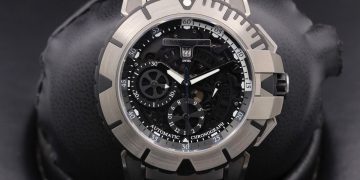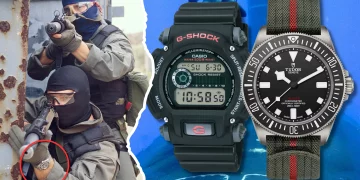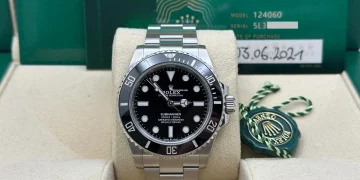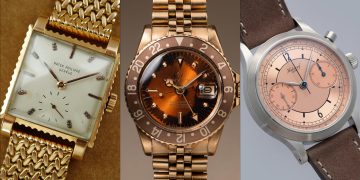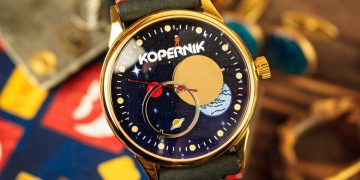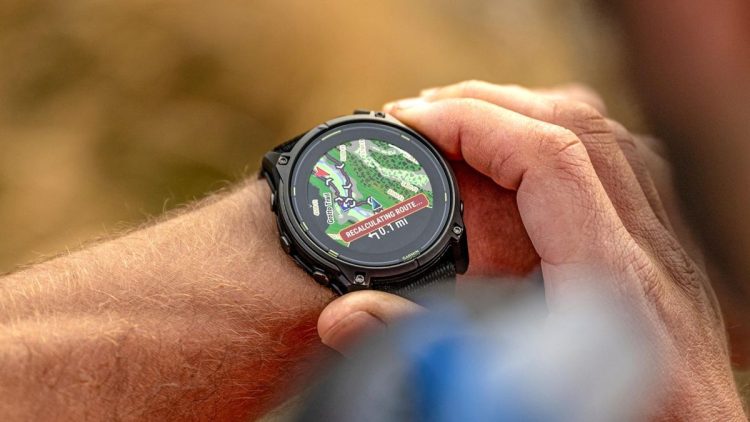Introduction: Garmin’s Enduring Cultural Influence
Garmin has undoubtedly made an indelible mark on the world of wearable technology, fitness tracking, and GPS navigation. What began as a company focused on developing aviation and marine GPS devices has since blossomed into a major player in the consumer electronics industry. Today, Garmin is known for its smartwatches, fitness trackers, outdoor navigation tools, and automotive GPS systems, impacting millions of users worldwide.
But Garmin’s influence isn’t just limited to its groundbreaking products. The company has cultivated a unique culture—one centered around innovation, precision, adventure, and fitness—which has had a profound effect on industries ranging from outdoor sports to health and wellness. Garmin’s commitment to pushing boundaries in technology and fostering a spirit of exploration has made it a household name for fitness enthusiasts, athletes, adventurers, and even tech aficionados.
This article aims to answer the question: How has Garmin’s culture shaped its products, its users, and its influence across the wearable tech and GPS industries?
We will explore the following themes:
- Garmin’s corporate culture and how it has fostered innovation
- The user base Garmin has cultivated across various industries, from athletes to outdoor explorers
- Garmin’s influence on the fitness tech industry, and how it compares to its competitors
- The company’s impact on the outdoor and adventure lifestyle cultures
- How Garmin continues to innovate in wearables and GPS technology to influence future trends
1. Garmin’s Corporate Culture: Innovation, Precision, and Adventure
a. Origins of Garmin’s Corporate Philosophy
Garmin was founded in 1989 by Gary Burrell and Min Kao with a clear vision to create GPS navigation systems that were accessible, reliable, and accurate. Their ethos focused on solving real-world problems, using technology as a tool to improve everyday lives, and they set out to make GPS more intuitive and user-friendly for the mass market.
- Culture of Innovation: From its inception, Garmin embraced a culture of innovation. The company continuously pushed the boundaries of GPS technology, integrating it into various products, including aviation, marine, automotive, and fitness devices.
- Commitment to Precision: Garmin has always placed a high premium on precision and accuracy, two values rooted in the brand’s GPS technology roots. This commitment to exactness has not only influenced its products but also its corporate ethos, as Garmin continues to create wearables and tech that users can trust for real-time, critical data.
- Engineering and Design Philosophy: Garmin’s engineering culture revolves around performance-driven design. Its team is known for its focus on creating rugged, durable products that cater to extreme conditions, especially for users in outdoor and adventure settings.
b. The Role of Leadership in Shaping Garmin’s Culture
- Gary Burrell and Min Kao: The co-founders set the tone for Garmin’s culture by emphasizing customer-centric innovation and real-world applications of technology. Both Burrell and Kao, being engineers, also fostered a work environment rooted in technical excellence and problem-solving.
- Leadership Evolution: Over the years, Clifton Pemble, the current CEO, has continued the company’s legacy of innovation while expanding Garmin’s focus to include broader sectors like healthcare and fitness tech.
c. Garmin’s Focus on Employee Empowerment
Garmin’s internal culture encourages employee empowerment and ownership. By cultivating an environment where employees are actively involved in product design, development, and troubleshooting, Garmin has maintained an adaptive and innovative approach to business. Employees are empowered to experiment with new ideas and push the boundaries of what technology can do.
2. Garmin’s User Base: A Community of Athletes, Adventurers, and Tech Enthusiasts
a. Athletes and Fitness Enthusiasts
Garmin has become synonymous with high-performance fitness tracking. Its products appeal to a wide variety of athletes, from runners and cyclists to swimmers and triathletes. Garmin has built a community of users that is passionate about fitness, health, and performance tracking.
- Multi-Sport Athletes: Garmin’s line of products, such as the Forerunner and Fenix series, is designed for multi-sport athletes who require sophisticated metrics. These watches offer advanced tracking features such as VO2 max estimation, heart rate variability, advanced running dynamics, and multi-sport modes.
- Fitness Tracking Ecosystem: Garmin’s products are deeply embedded in the fitness ecosystem, with the Garmin Connect app offering a platform for tracking fitness progress, setting goals, and participating in challenges. The integration of data between devices, apps, and third-party platforms like Strava has helped Garmin solidify its reputation as a reliable tool for fitness.
b. Outdoor Adventurers and Explorers
Garmin’s wearables have become a staple for outdoor adventurers, from hikers and climbers to trail runners and backpackers. Garmin’s Fenix and Instinct series are specifically designed for extreme conditions, offering rugged durability and high-precision GPS features for users in remote areas.
- Durability and Ruggedness: Garmin products are built for extreme conditions, offering water-resistance, shock-proofing, and protection against extreme temperatures. These features have made Garmin a trusted brand for those who need wearables that can withstand harsh environments.
- Exploration and Navigation: Garmin’s focus on navigation technology has made it a favorite among those who rely on GPS to explore remote landscapes. The ability to follow pre-loaded maps, track routes, and measure elevation gain has helped Garmin users explore uncharted territory with confidence.
c. Tech Enthusiasts and Early Adopters
In addition to athletes and outdoor enthusiasts, Garmin’s smartwatches and fitness trackers have become popular among tech enthusiasts. These users are drawn to Garmin’s innovative features, such as solar charging, advanced sensors (e.g., heart rate, blood oxygen, pulse oximeter), and customization options.
- Customization and Flexibility: Garmin offers users a wide range of customization options for their wearables, including watch faces, data fields, and activity modes. This level of personalization has made Garmin a go-to choice for users who want a device that adapts to their specific needs.

3. Garmin’s Influence on the Fitness Tech Industry
a. Redefining Fitness Tracking with Advanced Metrics
Garmin has played a major role in redefining fitness tracking by offering more sophisticated performance metrics compared to early fitness trackers like Fitbit or Jawbone.
- Advanced Health Monitoring: Garmin’s focus on health metrics—such as heart rate variability, stress levels, sleep tracking, and blood oxygen saturation—has contributed to a deeper understanding of user health. These features, particularly in high-end models like the Fenix 6 and Forerunner 945, have redefined what users expect from a fitness wearable.
- Multi-Sport Tracking: Garmin’s ability to support multi-sport tracking (including triathlon, swimming, cycling, and running) has made it a leader in the multi-sport community. These watches provide athletes with detailed insights into their performance across different sports.
b. Garmin vs. Competitors: The Battle for Dominance in Wearables
Garmin’s influence on the fitness tech industry is especially evident when comparing its products to those of its main competitors, such as Apple, Fitbit, and Polar.
- Apple Watch: Garmin’s Fenix and Forerunner series offer superior battery life, GPS accuracy, and more advanced sport-specific tracking than the Apple Watch. While the Apple Watch is more of a lifestyle smartwatch, Garmin focuses heavily on performance tracking and specialized features for athletes and outdoor enthusiasts.
- Fitbit: While Fitbit appeals to a more general audience with its simpler, user-friendly devices, Garmin’s products cater to athletes who demand detailed performance data. Garmin’s multi-sport features, advanced health metrics, and navigation tools make it the preferred choice for more serious fitness users.
- Polar: Polar and Garmin have long competed in the sports watch category. While both brands offer advanced features for athletes, Garmin has gained a broader user base with its more rugged designs and highly customizable devices.
c. The Wearable Tech Industry and Garmin’s Long-Term Influence
Garmin’s innovative approach to wearable technology has made a lasting impact on the fitness tech industry, and its advanced GPS and sensor technology are now standard in wearables across various price ranges. As the industry continues to grow, Garmin’s influence will likely expand further as it pioneers new tech like solar-powered wearables, AI integration, and mental health tracking.
4. Garmin’s Cultural Influence in Outdoor and Adventure Communities
Garmin has a distinct cultural influence within the outdoor adventure community. Its products have empowered explorers, backpackers, and athletes to venture into new territories, safely navigate unfamiliar terrains, and capture data on their journeys.
a. Adventurers and the “Explorer” Mentality
Garmin has cultivated a community of users who share a passion for exploration. Many Garmin products are designed to enhance outdoor experiences, whether it’s through advanced navigation or detailed environmental data.
- Trail Running: Garmin has developed a strong following among trail runners who rely on GPS technology to navigate complex terrain. Garmin watches often include topographic maps and elevation tracking to provide crucial information for adventurers.
- Backpacking and Hiking: For long-term backpacking trips or hiking expeditions, Garmin’s Instinct series and Fenix series are among the most trusted devices in the field, offering tools like compasses, altimeters, and weather forecasts to help adventurers prepare and stay safe.
5. Garmin’s Future Impact: Innovation and Evolution
a. Expanding Health and Wellness Features
Looking forward, Garmin will likely continue to evolve and expand its focus on health. With the rise of wearables in healthcare, Garmin’s products are likely to feature more advanced sensors that can track mental health, blood glucose, and hydration levels.
b. The Integration of AI and AR in Garmin Devices
The future of Garmin’s devices may also include the integration of artificial intelligence (AI) and augmented reality (AR). These technologies could further personalize the user experience, offering real-time feedback during activities and providing immersive navigation capabilities for outdoor explorers.
Conclusion: Garmin’s Lasting Cultural Influence
Garmin’s culture of innovation, precision, and adventure has shaped the lives of millions of users around the world. Through its continuous technological advancements, Garmin has redefined the wearable tech and GPS markets, creating products that cater to the diverse needs of athletes, outdoor adventurers, and health-conscious individuals.
As Garmin continues to evolve, its influence will only grow. The company’s products will continue to set the standard for rugged durability, advanced tracking, and user-centered design—cementing its place as a leader in both the wearable tech and navigation industries.



